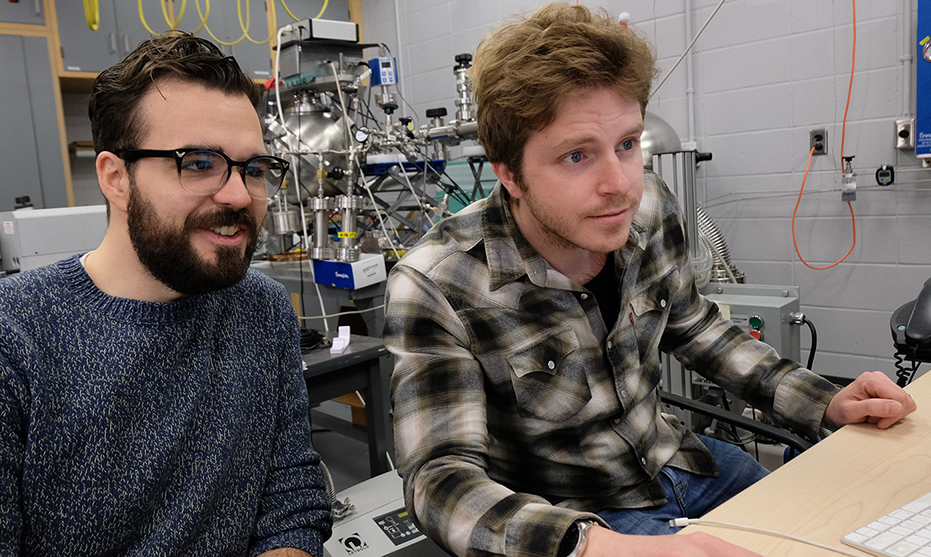News & Events
December 12, 2018
New publication from the NEWS-G team
Properly modeling the energy response of dark matter experiments is essential to understanding a particle detector’s sensitivity to this elusive constituent of the Universe. This is all the more important for experiments searching for low-mass dark matter, such as NEWS-G, and more challenging because of the extremely small energies being measured. In this paper by Daniel Durnford et al ., they propose using the COM-Poisson probability distribution to, for the first time, directly model the energy response of ionization-measuring detectors at these extremely small energies.

Daniel Durnford and Quentin Arnaud reviewing some data in the NEWS-G experiment room in Stirling Hall at Queen's University.
